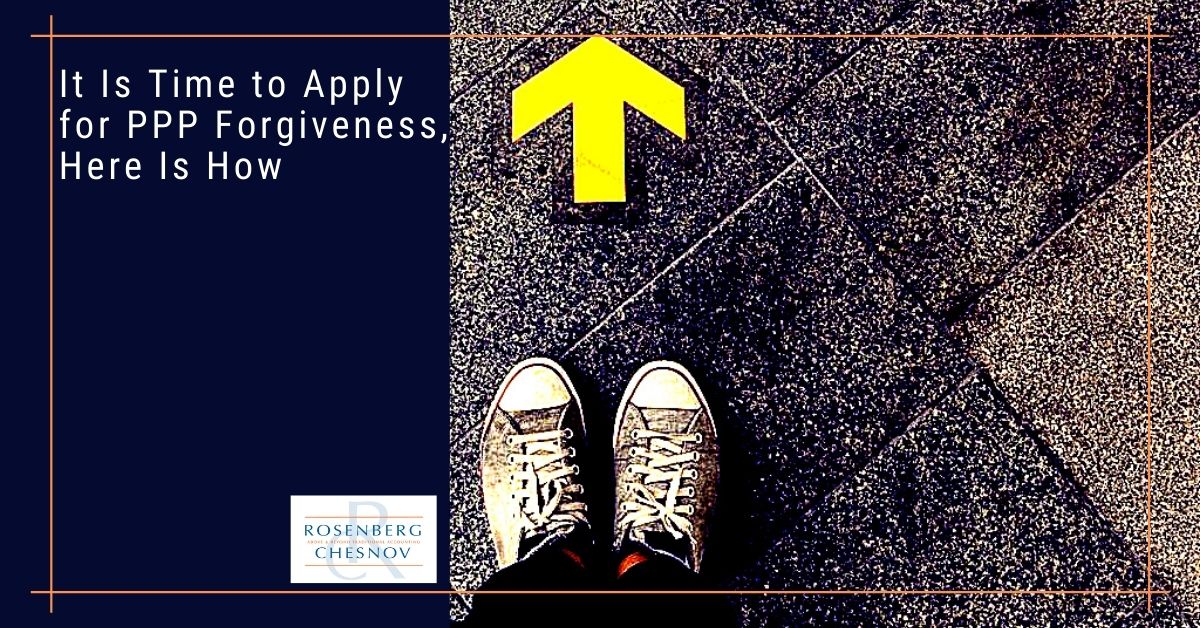

What does the Advance Child Tax Credit mean for you?
Category: COVID-19
The Paycheck Protection Program is a federal, SBA loan program designed to help small businesses avoid laying off employees. It includes a mechanism to forgive the loan if it is used for payroll expenses.
According to the Interim Final Rules as of April 10, 100% of the Paycheck Protection Program Loan is forgivable if the money is spent on payroll, rent, utilities or some loans.
Originally: 75% of the money must be spent on payroll and you cannot reduce employees or cut salaries for anyone earning under 100,000.
Now: 60% of the amount forgiven must have been spent on payroll.
2.5 times average 2019 Payroll or for new companies average payroll from January 1 through February 29.
The program provides $510 billion for loans to small businesses. It is based on the existing Small Business Administration’s (SBA) existing 7(a) program.
Through this program, eligible small businesses can obtain a loan to cover costs incurred over a 24 week, “covered period” in 2020. This was an 8 week period, but the Flexibility Act extended it to 24.
There has been a lot of talk about forgiveness of the loan, so note that in fact a portion of your loan may be forgiven:
Loan forgiveness is NOT automatic. After you spend the money you apply to the bank for forgiveness. Of the amount that is forgiven 60% must be spent on payroll and 40% on acceptable uses.
The bill defines “Payroll costs” as:
Payroll costs do not include:
Other acceptable uses of the loan are (these can make up 40% of the forgiven amount)
And
Who qualifies:
How much can I borrow?
What are the terms?
What if I already had to lay off some of my employees?
When and how can I apply for a loan?
The definition of “Payroll Costs” includes net earnings from self-employment. This is the amount reported on Line 31 on Form 1040 Schedule C of your individual tax return. You can add to that any separately stated 1099-MISC income that is subject to self-employment tax, but not reported on Form 1040 Schedule C.
This includes income from any work or business activities, minus business deductions. For purposes of the loan calculation, net earnings are capped at $100,000.
Applicants can aggregate “Payroll Costs” from the2019 calendar year and divide by 12 to arrive at average monthly payroll.
If you operate a self-employed business and employ individuals, then we believe the total “Payroll Costs” should include both your average monthly gross wages of employees plus your net earnings from self-employment, all subject to the $100,000 limits per individual.
We believe you can also add health insurance premiums. These are not subject to the $100,000 limit so you can add them on even if income is above $100,000.
The Interim Final Rule states that applicants:
“must also submit such documentation as is necessary to establish eligibility such as payroll processor records, payroll tax filings, or form 1099-MISC, or income and expenses from a sole proprietorship. For borrowers that do not have any such documentation, the borrower must provide other supporting documentation, such as bank records, sufficient to demonstrate the qualifying payroll amount.”
Ultimately this is left up to the banks and we have seen that each bank has slightly different requirements. At a minimum, we recommend having copies of your 2019 tax return (if filed), an income statement for 2019 or the last 12 months, 1099-MISC for yourself and payroll tax filings if you have employees.
If none of these are available, bank records may be sufficient, whatever you have to support your claim.
The rule states that in the 8-week period following the date that you received the money from the loan, 60% of the amount forgiven will have to have been spent on “Payroll Costs” and 40% can go to, mortgage interest payments, rent payments, utility payments, interest on other debt incurred before February 15, 2020.
To the extent that you spend the money on other things, that portion of the loan will not be forgiven. So be sure to keep good records.
The Treasury Department has not issued any guidance as to what would be included in the loan forgiveness calculation for self-employed businesses.
Until they tell us differently, we recommend paying yourself 75% of the loan balance over the eight weeks and paying these forgivable costs with the rest.
The loan term is 5 years at a 1% interest rate. Payments are deferred for 6 months or longer see the flexibility act but interest will accrue during the deferral period. There is no prepayment penalty. No guarantee or collateral is required.


Category: COVID-19


Category: COVID-19


Category: Accounting
Send us a message and we will contact you as soon as possible.
Send us a message and we will contact you as soon as possible.
Jeff Coyle, CPA, Partner of Rosenberg Chesnov, has been with the firm since 2015. He joined the firm after 20 years of business and accounting experience where he learned the value of accurate reporting, using financial information as a basis for good business decisions and the importance of accounting for management.
He is a diligent financial professional, able to manage the details and turn them into relevant business leading information. He has a strong financial background in construction, technology, consulting services and risk management. He also knows what it takes to create organizations having built teams, grown companies and designed processes for financial analysis and reporting.
His business experience includes:
Creating and preparing financial reporting, budgeting and forecasting.
Planning and preparation of GAAP and other basis financial statements.
Providing insight on financial results and providing advice based on those results.
Jeff also has a long history of helping individuals manage their taxes and plan their finances including:
Income tax planning and strategy.
Filing quarterly and annual taxes.
Audit support.
General financial and planning advice.
Prior to joining the firm in 2015, Jeff was in the private sector where he held senior financial and management positions including Controller and Chief Financial Officer. He has experience across industries, including construction, technology and professional services which gives him a deep understanding of business.
Jeff graduated from Montclair State University, he is a CPA and member of the American Institute of Certified Public Accountants, New York State Society of Certified Public Accountants and New Jersey State Society of Public Accountants.
Jody H. Chesnov, CPA, Managing Partner of Rosenberg Chesnov, has been with the firm since 2004. After a career of public accounting and general management, Jody knows the value of good financials. Clarity, decision making, and strategy all start with the facts – Jody has been revealing the facts and turning them into good business results for more than three decades.
He takes a pragmatic approach to accounting, finance and business. His work has supported many companies on their path to growth, including helping them find investors, manage scaling and overcome hurdles. His experience and passion for business reach beyond accounting and he helps businesses focus on what the numbers mean organizationally, operationally and financially.
He has a particular expertise in early-stage growth companies. His strengths lie in cutting through the noise to come up with useful, out of the box, solutions that support clients in building their businesses and realizing their larger visions.
Prior to joining the firm in 2004, Jody was in the private sector where he held senior financial and management positions including General Manager, Chief Financial Officer and Controller. He has experience across industries, which gives him a deep understanding of business.
Jody graduated with a BBA in Accounting from Baruch College, he is a CPA and member of the American Institute of Certified Public Accountants and New York State Society of Certified Public Accountants.
In addition to delivering above and beyond accounting results, Jody is a member of the NYSCPA’s Emerging Tech Entrepreneurial Committee (ETEC), Private Equity and Venture Capital Committee and Family Office Committee.
He is an angel investor through the Westchester Angels, and has served as an advisor for many startup companies and as a mentor through the Founders Institute.